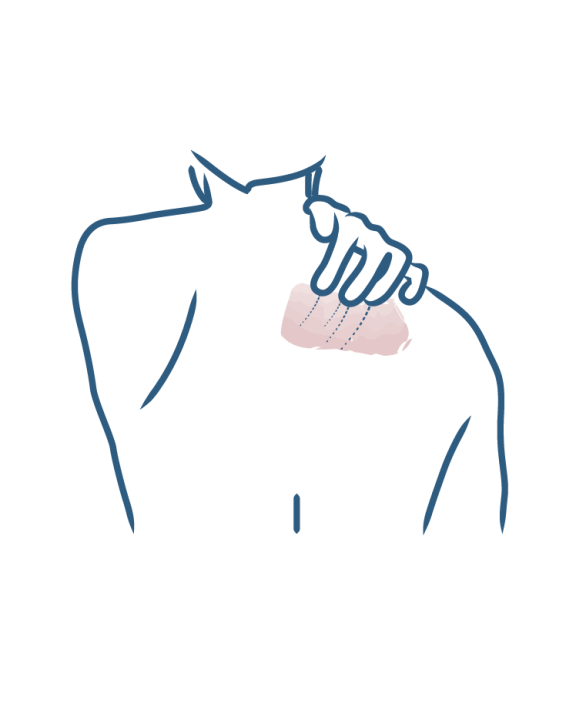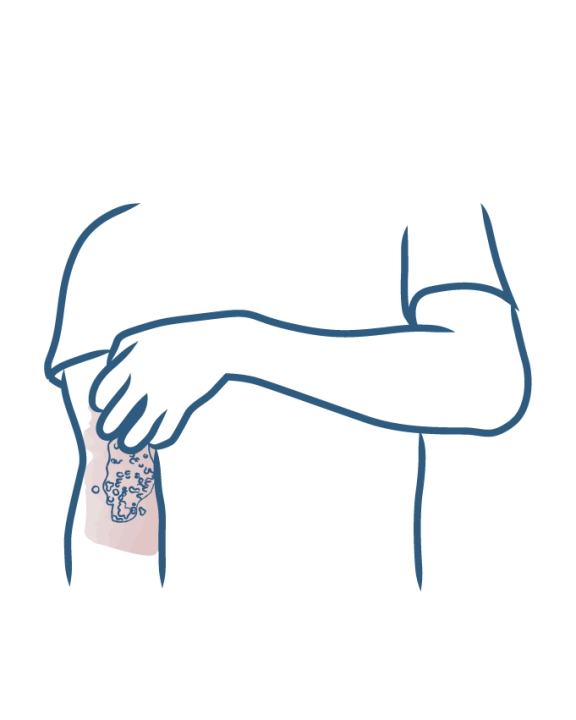What causes eczema?
- SUMMARY
- Eczema
Contact eczema due to cosmetics
- What is infantile eczema?
- When should you consult a physician about your baby's eczema?
- What soap should be used for babies with eczema?
- Eczema in babies: what habits should you adopt?
- Eczema in babies and children: the areas most often affected
- How should you treat baby’s and infant’s eczema?
- Cortisone cream to relieve eczema?
- Body eczema: hands, feet, arms, back, face, etc.
- Arm eczema (elbows, armpits, forearms)
- Eczema of the eyelids, eyes or palpebral eczema
- Eczema on the stomach and belly button
- Facial eczema
- Hand and finger eczema (chronic hand eczema)
- Eczema on the neck and nape of the neck
- Foot eczema
- Scalp eczema
- Eczema on the back
- Eczema in the ears
- Eczema around the mouth
- Leg eczema or varicose eczema
- What causes eczema?
- Stress-induced eczema
- Perspiration-induced eczema
- Allergy-induced eczema
- Hereditary eczema
- Contact eczema due to cleaning products
- Contact eczema due to medication and topical treatments
- Contact eczema due to cosmetics
- Contact eczema due to nickel and chromium
- Clothing contact eczema
- Living with eczema day to day
- Eczema: can it be cured?
- Eczema cream, ointment: what should you use?
- Eczema: how to treat itching
- What are the habits to avoid when you have eczema?
- Eczema: What daily reflexes should you adopt?
- Eczema: how can flare-ups be avoided?
- Eczema: what foods should you eat?
- Which detergent should eczema patients use?
- What soap should be used for eczema?
- Swimming pool, swimming when you have eczema?
Contact eczema due to cosmetics
Contact eczema results from prolonged contact with a wide variety of allergens. Some of them are used in the composition of many cosmetics, which can sometimes complicate daily cleansing and care.
What is eczema due to cosmetics?
This type of contact eczema appears following the use or application of a cosmetic:
- A hair color allergy, shampoo allergy or hairspray allergy results in eczema lesions on the scalp. In the case of shampoo-related dermatitis, eczema plaques may appear on the back or face if the product runs off when rinsing;
- Deodorant allergy leads to eczema plaques under the armpits;
- Lipstick allergy causes lesions on the lips and/or all around the mouth;
- Nail polish allergy is characterized by the fact that it can cause lesions on other parts of the body, especially the face and eyes, which we frequently touch, without being aware of it (hand-transmitted eczema).
In some cases, it is not a genuine contact allergy, but rather an irritative, non-immune dermatitis due to humidity, rubbing, repeated washing of the skin or hair, etc. Irritant dermatitis and contact eczema can develop successively in the same person, further altering the condition of the skin.
Which cosmetics are involved?
There are many cosmetics that can cause an eczema flare-up, but please note: cosmetics allergy is not an allergy to a type of product or brand. It is a contact allergy to a substance present in a cosmetic and which is a source of dermatitis. Most frequently, it is an allergy to a fragrance, dye or preservative. In case of doubt, allergy tests can reveal the substance responsible. It can be present in many cosmetics, hence the importance of reading product labels. In some cases, allergy tests are negative and the diagnosis of irritant dermatitis is then more likely.
What is the best way to treat eczema due to cosmetics?
There is nothing inevitable about allergic eczema and it can be treated like any other type of eczema, i.e. with anti-inflammatory creams and soothing repair creams applied to the lesions, as well as emollients over the long term. However, in order to avoid daily flare-ups of contact eczema and long-term changes in the skin condition, it is best to stop using the cosmetic(s) in question.
More information
- Discover Contact eczema due to medication and topical treatments
What causes eczema?
Contact eczema due to medication and topical treatments
- Discover Contact eczema due to nickel and chromium
What causes eczema?
Contact eczema due to nickel and chromium
- Discover Clothing contact eczema
What causes eczema?
Clothing contact eczema
- Discover Hereditary eczema
What causes eczema?
Hereditary eczema
- Discover Allergy-induced eczema
What causes eczema?
Allergy-induced eczema
- Discover Perspiration-induced eczema
What causes eczema?
Perspiration-induced eczema
- Discover Stress-induced eczema
What causes eczema?
Stress-induced eczema
Our care routines
Skin prone to atopic eczema, contact eczema, chronic eczema and/or, eyelid eczema
Dermatological expertise
To better understand your skin and hair, discover our exclusive content and innovative care products designed to improve your quality of life..





